Myers Briggs Type Indicators
Personality Types and Thinking Styles
Why Most People Don't Think Like You
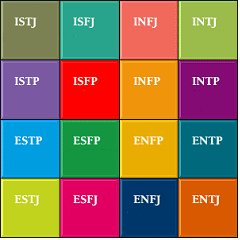
The Myers Briggs Type Indicators are based on the theories of Carl Jung, which he developed to attempt to explain the differences between normal healthy people.
Based on observations, Jung came to the view that differences in behaviour are the result of innate tendencies of people to use their minds in different ways.
This is a brief introduction and an overview of the Myers Briggs Type Indicators and their significance in relation to individual differences, and how this applies in change leadership and management.
This is a subtle, complex and dynamic method and needs to be applied and administered in practise with trained accredited support.
If you are a leader - less than 1 in 50 people think like you do
The Myers Briggs type of a leader [ENTJ] is only shared by approximately 1.8% of the population.
There are significant differences in how you think and how many other people process things and how they think.
A key aspect of successfully working with and interacting with people lies in your recognition of these individual differences.
In summary:
More blind to this than we realise
I know this may seem obvious, and it may be so, yet over the years I have heard so many CEOs and directors complaining that their managers "just dont get it".
In my experience, most of us are more blind to this than we realise. And that includes me!
I worked with a guy as a close colleague and friend for 17 years and I could not figure out why he didn't grasp and respond to some of my ideas and initiatives. He is a highly intelligent, gifted and experienced businessman with great people skills and yet this was a significant source of friction between us for years.
It was only when I became acquainted with the Myers Briggs Type Indicators, a few years ago, that I saw quite clearly - for the first time - that our types were very different and thus we functioned completely differently, our mental processes were very, very different.
The components of the Jungian types
Myers Briggs types are based on 8 basic mental functions observed by Jung.
The start point is that when people's minds are active they are involved in one of two mental activities:
He identified two ways in which people take in information, based on:
He identified two ways in which people process information, based on:
Jung also observed that people tend to be energised by one of two orientations:
Finally, Jung observed that people use these different functions in a form of hierarchy of preference, described by Jung as functions:
The Myers Briggs model brings these components together into 16 types.
There are many caveats and qualifiers as how all this is applied and they do not describe fixed states but rather dynamic preferences that can change and develop in reponse to changing environment and personal development.
I repeat what I said above, this is a subtle, complex and dynamic method and needs to be applied and administered in practise with trained accredited support.
I recommend the Myers Briggs Foundation for full information.
Summary of Myers Briggs Type Indicators
Just click on any link in the table below to open a summary and brief description of the type.
Books
Tests
Take the Myers Briggs Test
[Note: This currently costs $49.99. I have no commercial relationship with this company and do not receive any commission or financial payment if you do the test.]
Free Online test - Identify Your Type with Jung Typology Test
Return to: Managing Personal Change
LATEST ARTICLES
The Battle For Your Mind - How To Win Inner Freedom In A Digital Age Of Distraction
 From External Events to Inner Events. We often think of “events” as things that happen out there: the traffic jam, the rude comment, the delayed email reply. But what truly shapes our experience is wh…
From External Events to Inner Events. We often think of “events” as things that happen out there: the traffic jam, the rude comment, the delayed email reply. But what truly shapes our experience is wh…How to See Your Thoughts Without Becoming the Story
 A Practical Guide to Thought-Awareness. You can spend your life inside the stories of your mind without ever learning how to see your thoughts clearly and objectively. Most of the stuff we tell oursel…
A Practical Guide to Thought-Awareness. You can spend your life inside the stories of your mind without ever learning how to see your thoughts clearly and objectively. Most of the stuff we tell oursel…The Collison Decision Matrix - A Simple Framework for Better Choices
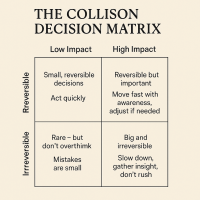 The Collison Decision Matrix Is A Practical Everyday Thinking Tool. Most of us spend a surprising amount of time worrying about decisions. From small ones such as what to wear, what to eat, what to te…
The Collison Decision Matrix Is A Practical Everyday Thinking Tool. Most of us spend a surprising amount of time worrying about decisions. From small ones such as what to wear, what to eat, what to te…The Power Of Asking The Right Question
 The Power Of Asking The Right Question Lies In The Quest For Insight. To experience the power of asking the right question you must develop the practice of asking questions. The best way to improve th…
The Power Of Asking The Right Question Lies In The Quest For Insight. To experience the power of asking the right question you must develop the practice of asking questions. The best way to improve th…Site Pathways
 Here is a site pathway to help new readers of Zen-Tools navigate the material on this site. Each pathway is based around one of the many key themes covered on this site and contain a 150 word introduc…
Here is a site pathway to help new readers of Zen-Tools navigate the material on this site. Each pathway is based around one of the many key themes covered on this site and contain a 150 word introduc…How To Live With Contradiction - Beyond Thought Let Stillness Speak
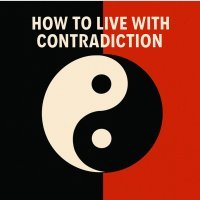 A major impact on so many peoples' lives is the situational contradiction of unfilled realistic expectations. So where does all this leave us? Well here we are, with mental equipment that is more lim…
A major impact on so many peoples' lives is the situational contradiction of unfilled realistic expectations. So where does all this leave us? Well here we are, with mental equipment that is more lim…How To Trust The Process Of Mindfulness - Right Now
 In mindfulness, the process isn’t some distant goal — it's what is happening right now. When we talk about how to trust the process of mindfulness the credibility of the process is heavily dependent…
In mindfulness, the process isn’t some distant goal — it's what is happening right now. When we talk about how to trust the process of mindfulness the credibility of the process is heavily dependent…Inner Mastery For Outer Impact - Mental Clarity For Effective Action
 Insights only matter if they translate into consistent action. In a world crowded with quick fixes and motivational soundbites, the theme “Inner Mastery for Outer Impact” calls us to something more e…
Insights only matter if they translate into consistent action. In a world crowded with quick fixes and motivational soundbites, the theme “Inner Mastery for Outer Impact” calls us to something more e…The Wise Advocate - Helping You Achieve The Very Best Outcome
 The focus of your attention in critical moments of choice either builds or restricts your capacity for achieving the best outcome. When we talk of 'The Wise Advocate' its easy to think of the consigl…
The focus of your attention in critical moments of choice either builds or restricts your capacity for achieving the best outcome. When we talk of 'The Wise Advocate' its easy to think of the consigl…Trust The Process - Beyond The Cliche
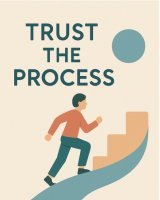 The phrase "trust the process" has become a cliche, the woo-woo mantra of the "self help" industry. Those three little words feel like they ought to mean something useful but hidden behind them are a…
The phrase "trust the process" has become a cliche, the woo-woo mantra of the "self help" industry. Those three little words feel like they ought to mean something useful but hidden behind them are a…The Dopamine Delusion - Why Anticipation Beats Achievement
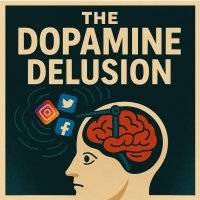 The thrill we feel is not in the having, but in the wanting. The more we have, the more we want. The more things we acquire and the easier things get for us, the more discontent we feel. The more spo…
The thrill we feel is not in the having, but in the wanting. The more we have, the more we want. The more things we acquire and the easier things get for us, the more discontent we feel. The more spo…The Power Of Silence Is Experienced In Your Use Of Language
 Practise the "Beneficial Neurological Delay" for optimal comprehension. The power of silence is experienced in your use of language, specifically: - How you formulate the words you use to think and in…
Practise the "Beneficial Neurological Delay" for optimal comprehension. The power of silence is experienced in your use of language, specifically: - How you formulate the words you use to think and in…